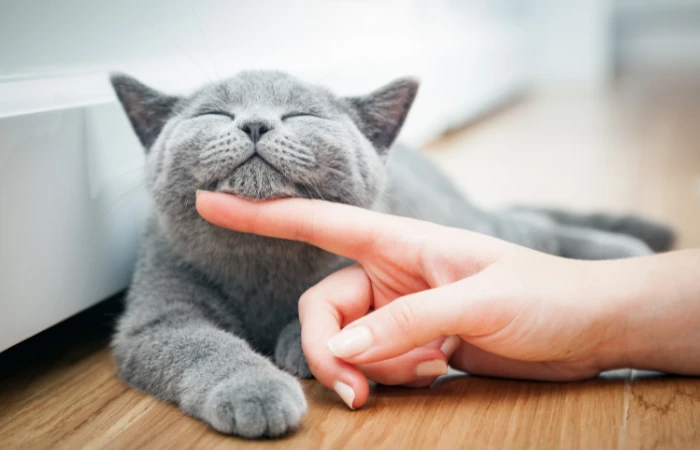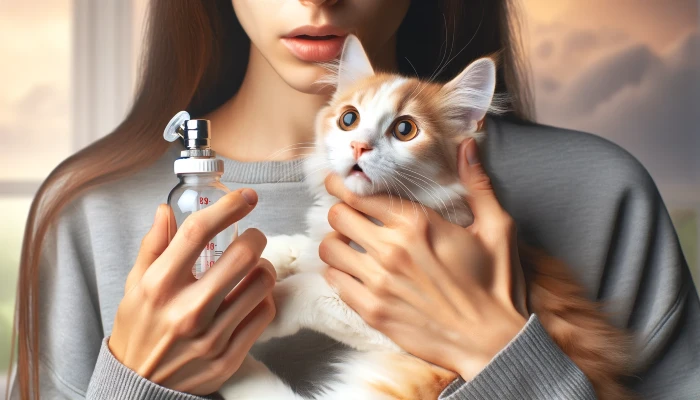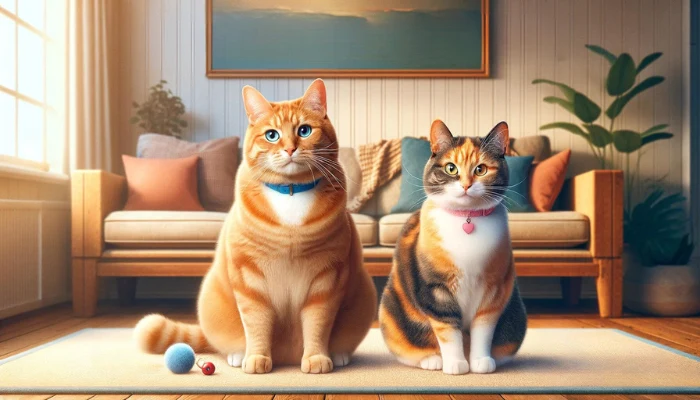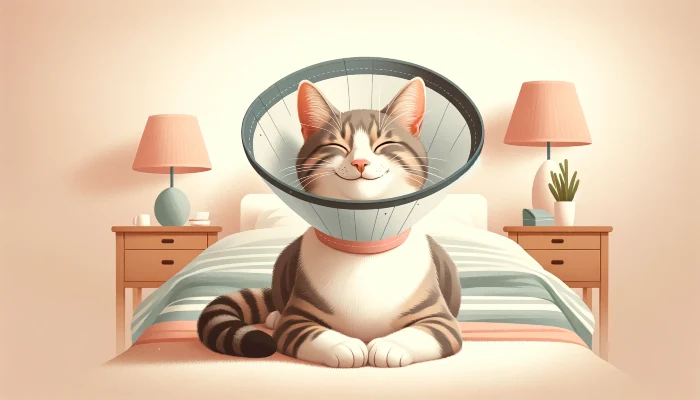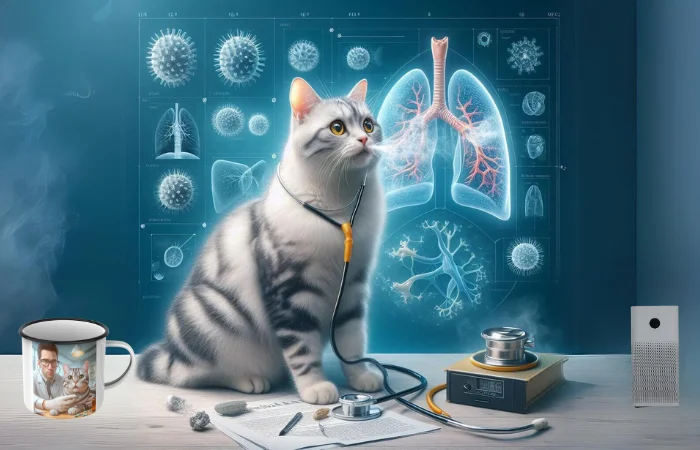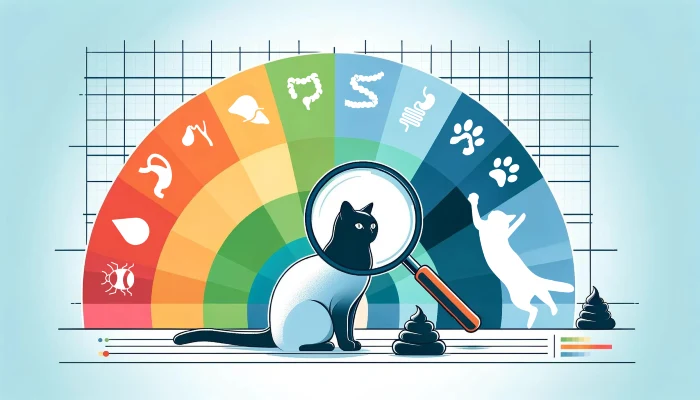Welcome to the wonderful world of cat purring, a soothing sound that has captivated the hearts of feline aficionados for ages! Cats’ signature purring has long been a subject of fascination and mystery, echoing the serene and enigmatic nature of these beloved pets.
Whether you’re a curious teen or a seasoned academic, our exploration into the sonic allure of cats is designed to cater to all levels of readers.
In this feature, we’re excited to offer you two distinct versions of our content for a customizable reading experience. It’s something new we’re going to start rolling out (maybe).
For our younger or leisure readers, opt for the “Fun Version.” This rendition delivers a lively, easy-to-understand, and engaging narrative that demystifies the cat’s purr in a light and entertaining manner. It’s the ideal pick for a casual, enjoyable read that is accessible and fun for all ages.
Alternatively, if you crave a deeper understanding and wish to explore the mechanics and science behind the enigmatic purr, the “Academic Version” is your go-to choice.
Here, you’ll find an analytical, detailed examination of the recent findings and theories surrounding the subject, providing a comprehensive insight for readers seeking an in-depth understanding of the topic.
The Sonic Enchantment of Cats: An Introduction
The purr of a cat is a sound like no other, offering comfort, expressing contentment, and even, as some believe, promoting healing. This hypnotic melody, produced by our feline companions, has piqued human curiosity and affection for centuries, beckoning us to understand its origins and implications.
As you prepare to navigate through the ensuing content, bear in mind that the gentle hum of a purring cat is more than just a delightful acoustic experience — it’s a fascinating sonic puzzle waiting to be solved. Whether you choose the playful narrative of the Fun Version or the scholarly depth of the Academic Version, an intriguing exploration awaits.
Now, it’s time to choose! Make your selection below and consume Dakoa content, your way…
Unlock the Secret Behind Your Cat’s Soothing Purr with Our Easy, Breezy, and Totally Fun Explanation!
Hey, cat lovers! Science folks may have finally cracked the code on how our furry friend’s purr!
So, cats have these cool, squishy ‘purring pads’ in their vocal cords. It’s like having built-in speakers! When air flows through, these pads make the cords vibrate slowly, creating that awesome purr we all love.
Have you ever wondered how cats, being so small, can make such a low, chill sound?
These pads are the secret! They help the little cords make big, low sounds.
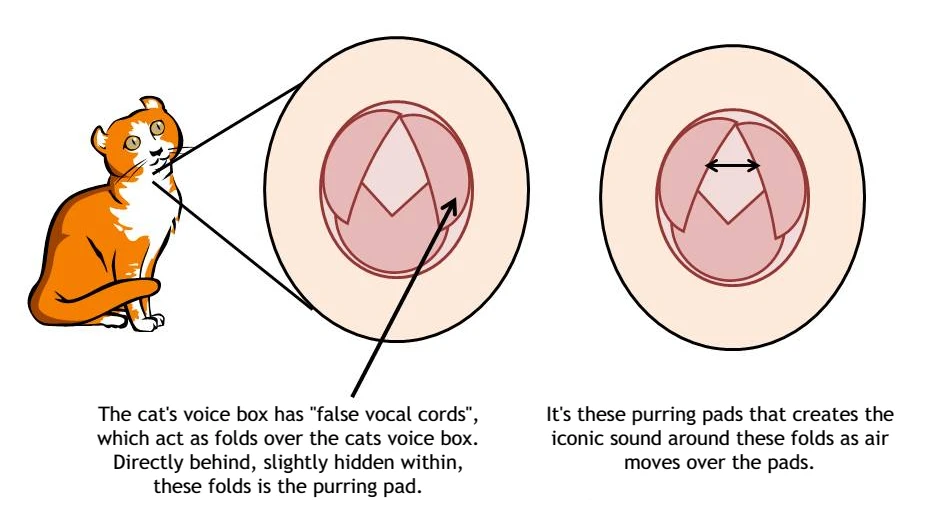
Christian Herbst, a voice scientist from Vienna, led a team of smarty-pants researchers to figure this out. They believe purring isn’t about the cat’s muscles working hard; it’s more like an automatic, easy-going thing that happens after the brain gives a green light.
Their study shows it’s kinda similar to the “vocal fry” in humans. That’s when someone talks in a low, scratchy voice, like they’re super relaxed or maybe a bit bored.
The researchers found that the purring pads in cats help make the chill vibe sounds, using similar tricks to those used for their high-pitched meows.
Inside these cords are tiny structures made of collagen and elastin fibers (think of them as the building blocks). They help in damping the sound, making it low and soothing.
Herbst and team did a mad science experiment with the vocal cords from eight cats that had passed away. They pushed air through the cords, and guess what? Without any help from muscles or the brain, the cords still made the purr sound!
This means that, maybe, the muscles aren’t that important in purring. The structure in their vocal cords might be doing all the work.
While we still don’t know why cats purr, some think it’s their way of saying they’re happy, or maybe it’s a healing thing. Who knows? But understanding purring better might help us know more about cats and even invent cool stuff to keep them happy and healthy!
Delve into the Acoustic Mystique of Feline Purring: An In-Depth Analysis Unraveling the Science Behind the Sound
In an insightful revelation, scientists may have unraveled the mystery behind the mesmerizing purring of cats. This signature hum, often synonymous with contented felines, seems to operate on auto mode, with recent research spotlighting ‘purring pads’ nestled within the cats’ vocal cords as central to the phenomenon.
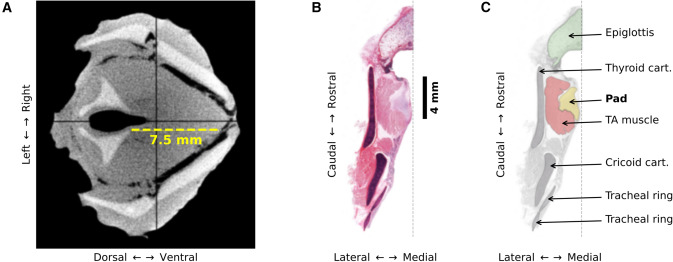
These intriguing pads, constituted of connective tissue, are embedded within the vocal cords, seemingly acting as density increasers. This density augmentation in turn slows down the vibration of the vocal cords, generating the soothing, low-frequency rumble universally loved by cat enthusiasts.
Traditionally perplexed by the mechanics of this unique acoustic expression, especially given the short length of cats’ vocal cords as compared to larger creatures that emit similar low-pitched sounds, scientists have now gleaned more clarity on the matter.
These pads indeed facilitate the beloved purring even with the petite vocal cords of cats, utilizing mechanisms typically reserved for producing higher-pitched vocalizations, like meows.
The research, spearheaded by renowned voice scientist Christian Herbst from the University of Vienna, Austria, effectively counters the prevailing notion attributing purring to active muscle contractions. In contrast, the team proposes that purring is essentially a passive, aerodynamic activity that kicks in following an initial signal from the brain.
“Typically, the larger the animal, the longer the vocal folds and so the lower the frequency of sound created,” Herbst says.
The researchers’ publication elucidates the fascinating parallel between cats’ low-frequency vocal fold vibrations and humans’ “vocal fry” register, characterized by prolonged closed quotient.
This register in human speech production yields a raspy, droning sound, as the vocal cords vibrate at exceptionally low frequencies, with their tension, opening thickness, and airflow acting as contributing factors.
Delving deeper, the scientists discovered structures within the vocal cords, comprising collagen and elastin fibers arranged meticulously to temper high-frequency sounds. With a diameter extending up to 4 millimeters, these structures had been identified in earlier studies but without exploration into their role in the purring process.
Herbst and his team embarked on an experimental journey, extracting the larynges (housing the vocal cords) from eight deceased domestic cats.
By pressing the cords together and introducing warm, humidified air, the researchers observed self-sustained vocal fold oscillations, producing the characteristic purring sound in the 25 to 30 Hz frequency range without any muscular contraction or neural engagement.
The researchers recorded the high-resolution video seen below. This video verifies that domestic cat larynges can, in fact, produce purring frequencies without input from the brain as the test subject was deceased. The video shows the physical process of purring and is slowed to 6,000 frames per second.
This groundbreaking discovery implies that muscle contractions might not be indispensable for purring, spotlighting the connective tissues as possible chief contributors.
Nonetheless, confirmation of these findings would necessitate further experimentation with living subjects as all research was conducted on eight domestic cats that had been humanely euthanized due to terminal illness in stark comparison to Elon Musk’s Neuralink test subjects.
Although the true purpose of purring continues to be enigmatic, with prevailing theories ranging from expressions of contentment to healing mechanisms, the new findings promise to shed light on the health and wellness implications of purring for our feline friends.
More To Discover
The acquired knowledge might even pave the way for innovative applications, including the development of calming gadgets for cats and novel therapeutic approaches for managing pain and anxiety.
Source: Current Biology








